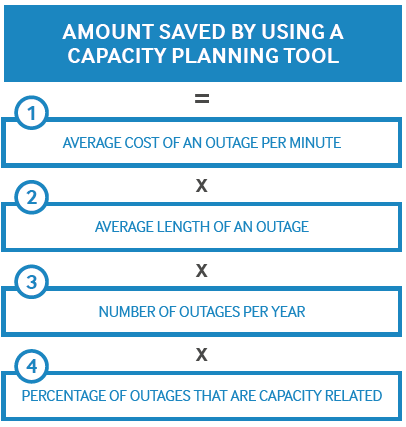The Capacity Planning ROI Calculator
How to show ROI from capacity planning
Enterprise IT can be divided into two camps: the first camp helps keeps the lights on and the second can provide returns to the actual business. There should be pressure to minimise the costs of the first camp without compromising service levels. However, the second camp should be treated like any other capital expenditure; they should be assessed on business merit alone. But how can IT teams successfully put forward a credible case for capacity planning? The best way is to start with a simple calculation based on the fewest assumptions.
Average cost of an outage per minute: This varies according to industry and how mission-critical the applications in question are. A recent study of US data centres by Ponemon Institute, sponsored by Emerson Network Power, estimates that the average cost of an unplanned data centre outage is more than $8,900 per minute. According to the study, this cost has been rising steadily year-on-year.
Average length of an outage: According to the Ponemon Institute report, the average outage duration is 95 minutes.
Number of outages per year: Research conducted by analyst firm Quocirca in 2016 reports that an enterprise suffers on average three outages per month. However, IT will usually have systems in place to record their actual number of incidents or outages in the previous year.
Percentage of outages that are capacity related:
A 2014 Gartner report estimates that around 30% are due to capacity problems. Although it is always more accurate to use a company’s internal data, using available industry data, the average cost of an unplanned capacity related outage amounts to:
36 x 8900 x 95 x 0.3 =$9.1M.
Even with the conservative assumption that capacity planning tools can prevent just a third of these outages, over $3M can be saved.

